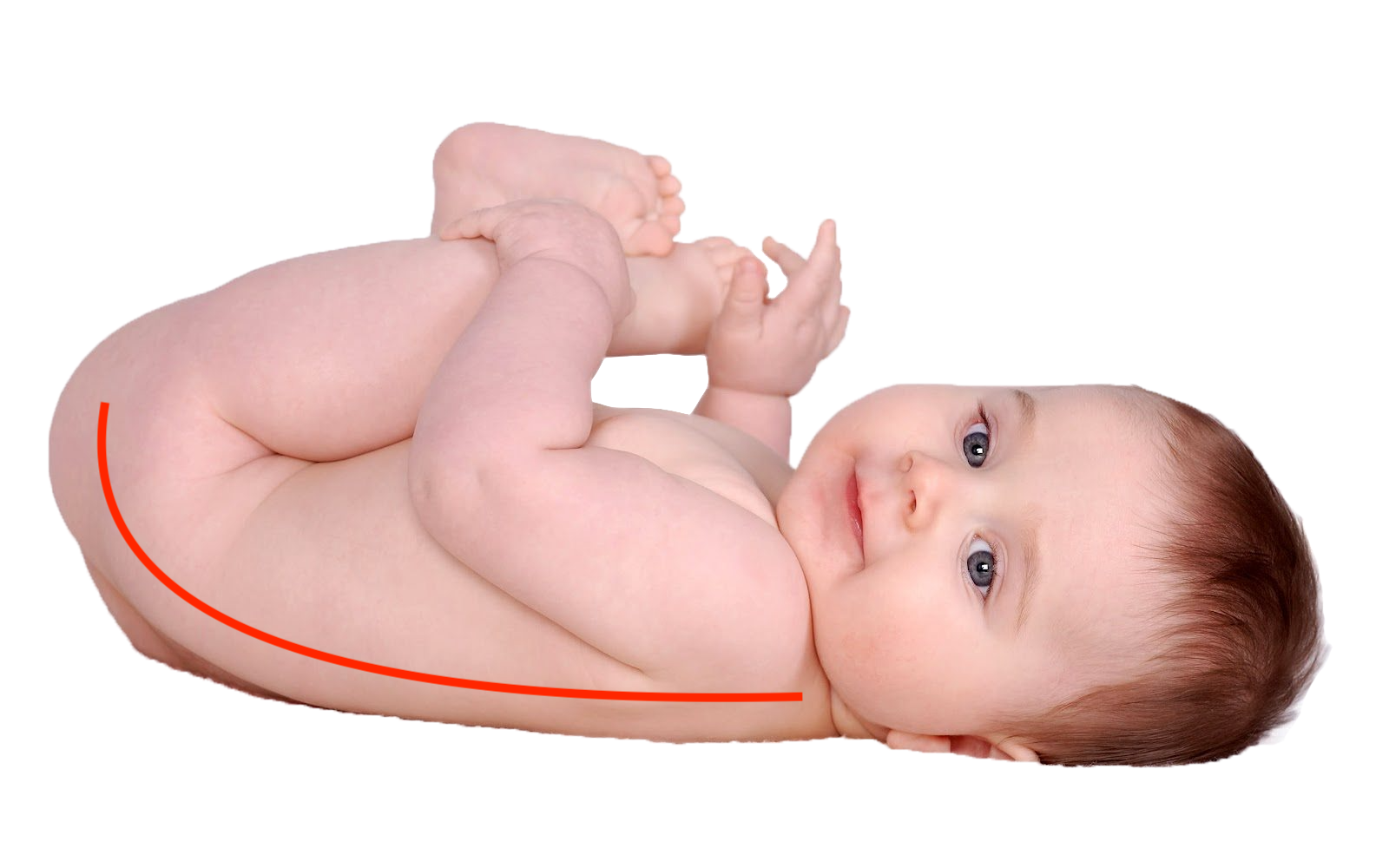
In previous Part 3, we talked about the baby Psychological Development and learning throughout the usage of a baby carrier.
If you missed out the previous part, click here for the link.
Part 1: Baby's Vision Development
Part 2: Baby's Brain Development
Part 3: Baby's Psychological Development
Last but not least, we will also need to look into their Physical Development that also come in stages.
When your baby is first born, his spine will have a convex curve in the shape of the letter C. This spinal alignment is called the primary curve and develops in utero. Do you notice how their legs are tucked into a frog leg position with their thighs pulling up towards the chest? This fetal tuck allows your baby to maintain her primary curve alignment, reducing the pressure on the spine and hips. It is also the most calming position for your baby and the best position for regulating body temperature.


As they gradually grow, your baby starts to lift his head, sit up, crawl and eventually stand up which completes their spinal development to an elongated S. This is why when you carry an infant, you must be aware of and provide adequate support to their C shape spine. At this stage, they are also unable to hold their own head up hence you will also need to provide support to their head and neck.

A baby carrier that is suitable for an infant are usually one that allows the baby to face inwards while supporting the C shape spine, their head and their neck. If you are holding them with your hands, be sure to have one hand supporting his head and the other hand under his bottom to allow their spine to stay in C shape.
A baby carrier that does otherwise (like the one on the left of the picture), will only bring upon harm to their physical development. That is why is it important to seek professional advice before purchasing a baby carrier.

While it is important to protect their spine, it is also vital to ensure proper hip position. We should never force babies to put their legs together, as it might lead to hip dysplasia. The Spread Squat position – also known as the M-Position, or Jockey Position – is recommended with the thighs spread around the mother’s torso and the hips bent so the knees are slightly higher than the buttocks or at the level of the buttocks with the thighs supported.
"Did you know that a team of pediatricians in Cologne, Germany published an article advising against wearing baby front facing out? The narrow base of certain front-pack type carriers do not adequately support the hip and thighs in a proper spread-squat position, thus putting baby’s vulnerable developing hip joints at risk. It is important to understand that the risks lie in the inability of certain carriers to support baby in a spread-squat position, not whether baby is facing out or not."
With all of the above factors, the best baby carrier for babies below 5-6 months old is one that allows front inward facing and provide full coverage to the baby’s back. Once they have developed stronger neck muscles, it is still recommended to carry them facing inwards with an option of carrying sideways. As they show interest in the world around them and becomes restless with inwards facing, you can opt to carry them sideways which provides larger view of their surroundings while continues to conform to the natural development of their posture.

I have chance to talk with a professor of neurosurgery and spine from United Arab Emirates (but sorry i forgot his name!), he approach me by out of sudden just to tell me that this is most ideal position for baby's hip. Taking this opportunity i just take a photo with him (he is the guy on the right)
Basically for those baby carriers that provides outward facing and are unable to support their C shape spine, M-position hips, and do not have full coverage of their back, are those that might do more harm than good to the baby’s spine and hips development.

Finally, you can consider back carrying when your baby is turning 1.While it is not popular to back carry in Malaysia, you can still get professional advice on how to back carry safely as it is still one of the better options to allow your baby to have a better view of the world while protecting their spine and hips. Only if back carrying is still unable to satisfy its curiosity to the world, then you may consider carrying them outward facing as a last choice.

To summarize it all, have you identified your baby’s vision, brain, psychological and physical development? Are you aware of the proper stages of babywearing?
If you still have any doubts, or if you would like to share your experiences with us, feel free to consult a professional or contact us for more babywearing tips and information.

UCA’s Babywearing Consultant and TBAN’s Breastfeeding Counselor, in Malaysia
For consultation, please make your reservation via customerservice@unisonca.com or whatsapp 012-5267411.
Source:
1. https://www.brainpickings.org/2012/02/29/visual-cliff-study/
2. http://blog.intellidance.ca/blog/2-15-2011/c-s-how-nurture-your-babys-spine-development
3. https://baike.pcbaby.com.cn/long/5889.html
4. https://hipdysplasia.org/developmental-dysplasia-of-the-hip/baby-wearing/
5. https://www.babywearing.tw/
6. https://read01.com/3mAQzN.html#.WzBkCKczbIV
7. https://pediatria.mp.pl/pielegnacja/76377,chusty-do-noszenia-dzieci-najczestsze-pytania
8. https://ergobaby.com/blog/2011/02/facing-in-facing-out-a-science-based-view-on-baby-carrying-positions/
9. https://boba.com/blogs/boba-reads/nine-reasons-not-to-carry-your-baby-facing-out
10. https://www.sheffieldslingsurgery.co.uk/new-to-slings/how-to-use-a-sling-safely/
